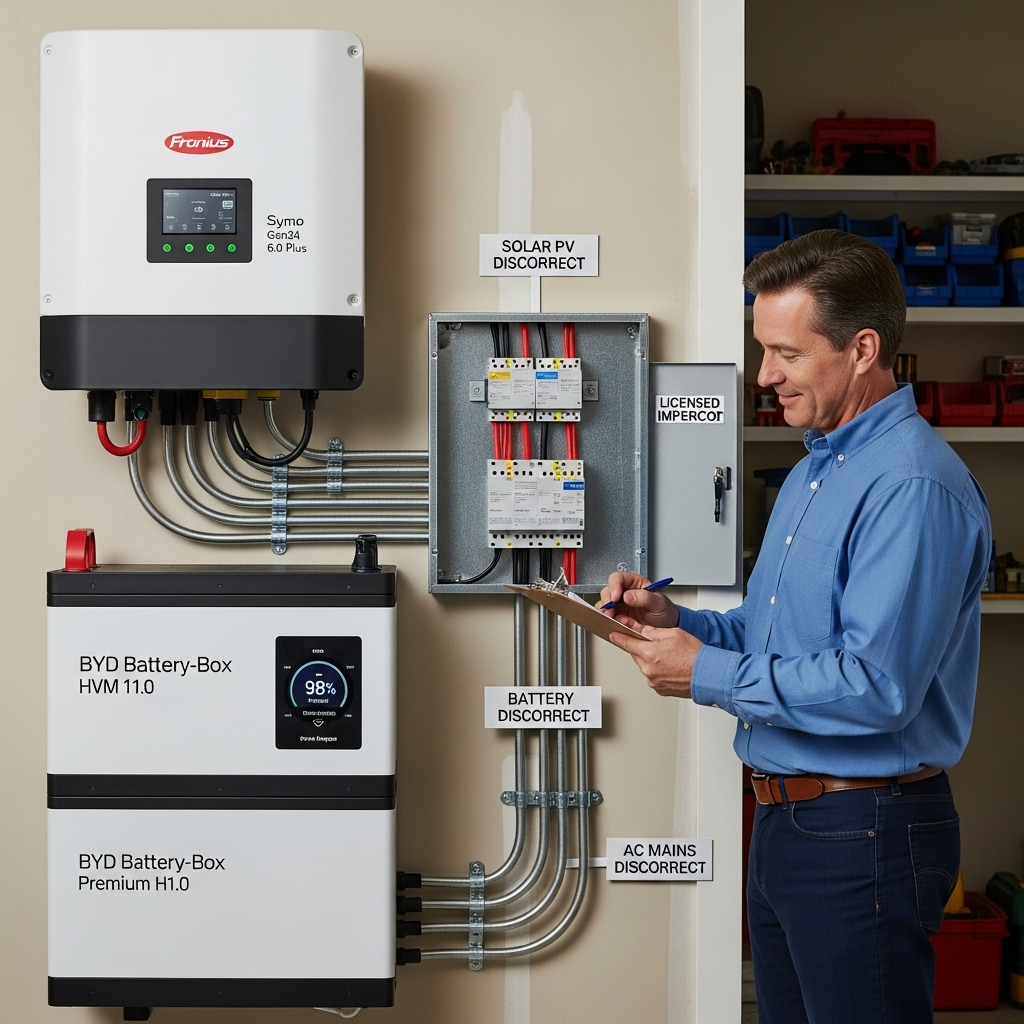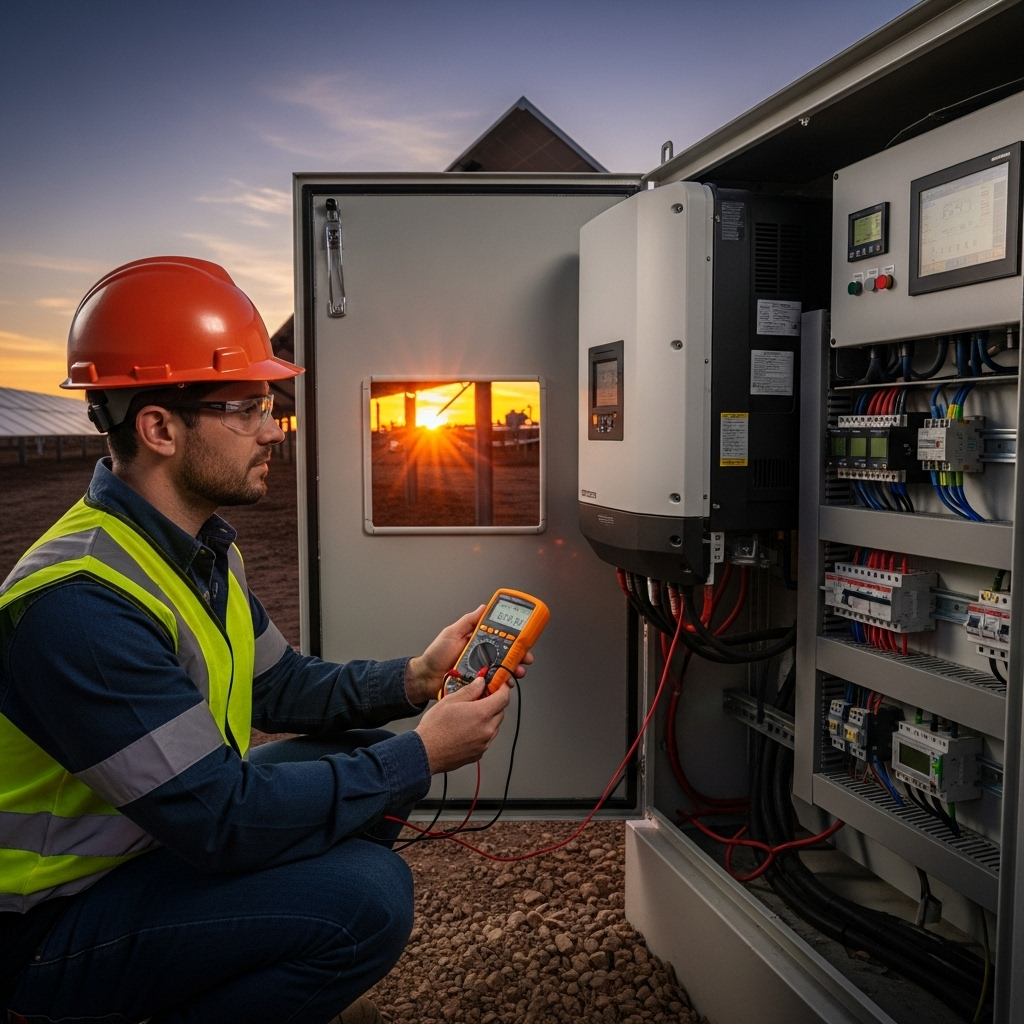In the rapidly expanding solar and energy storage sector, quality is the bedrock of performance, safety, and financial viability. For every Photovoltaic and Energy Storage System (PV-ESS) project, from residential rooftops to utility-scale installations, a robust quality assurance (QA) framework is essential. International standards provide the necessary structure for this framework, creating a universal language for excellence. This roadmap focuses on two pivotal standards, ISO/IEC 17025 and ISO/IEC 17020, explaining how they work together to ensure your PV-ESS project delivers on its promise of reliable, clean energy.
The Foundation of Quality in PV-ESS
Establishing a clear quality infrastructure is not just about compliance; it's about building trust and ensuring long-term value. Without standardized processes, projects face significant risks, including underperformance, safety hazards, and diminished investor confidence.
Why Standardized QA is Non-Negotiable
Poor quality in a PV-ESS can lead to tangible losses. A solar panel that degrades faster than specified, an inverter that fails prematurely, or a battery that doesn't hold its charge directly impacts the system's energy output and financial returns. More critically, electrical systems carry inherent risks, and component or installation failures can pose serious safety threats. As noted in an EERE Success Story on international PV manufacturing standards, robust quality standards bolster the industry by adding customer protections and making investors more confident in solar assets. This confidence is crucial for securing financing and driving down project costs.
The Role of International Standards
The International Organization for Standardization (ISO) and the International Electrotechnical Commission (IEC) are global bodies that develop and publish standards. Their role is to ensure that products, services, and systems are safe, reliable, and of good quality. For the complex world of PV-ESS, these standards create a level playing field, allowing components and practices to be evaluated against the same high benchmarks, regardless of where they are manufactured or installed.
ISO/IEC 17025: Ensuring Competence in Testing and Calibration
The first pillar of our QA roadmap is ISO/IEC 17025. This standard is concerned with the accuracy and reliability of the data that underpins product quality claims. It sets the bar for the technical competence of testing and calibration laboratories.
What is ISO/IEC 17025?
ISO/IEC 17025 specifies the general requirements for the competence, impartiality, and consistent operation of laboratories. A laboratory accredited to this standard has demonstrated that it has a robust quality management system, is technically competent, and can generate valid and reliable results. This is the gold standard for any facility that tests and calibrates equipment, from solar panel flash testers to battery cyclers.
Practical Application in PV-ESS
In the context of solar and energy storage, ISO/IEC 17025 accreditation is critical at the component level. It applies to:
- Component Testing: Laboratories test solar panels for power output (STC rating), durability (hail impact, snow load), and degradation. They test inverters for efficiency and grid compliance. For batteries, they verify capacity, cycle life, and safety.
- Calibration: The equipment used for manufacturing and field testing must be accurate. ISO/IEC 17025 accredited labs calibrate multimeters, insulation testers, and irradiance sensors to ensure that measurements taken on-site are reliable.
- Performance Verification: When a manufacturer claims a certain level of performance, an accredited lab can independently verify it. This confirmation is crucial for project developers and financiers.
The Impact on System Performance
The competence of a testing lab directly translates to real-world system reliability. Accredited labs are essential for verifying key performance metrics that determine a project's success. For instance, claims about a battery's Depth of Discharge (DoD) and Round-Trip Efficiency (RTE), which are critical factors detailed in the ultimate reference for solar storage performance, must be substantiated by precise, repeatable tests. Without the assurance of ISO/IEC 17025, you are relying on unverified data, which introduces significant project risk.
ISO/IEC 17020: The Standard for Inspection Bodies
While testing validates the components, inspection ensures they are assembled and installed correctly. This is where ISO/IEC 17020, the second pillar of our QA roadmap, comes into play. It provides a framework for the competence and impartiality of bodies performing inspection.
Defining ISO/IEC 17020
ISO/IEC 17020 specifies requirements for the operation of various types of bodies performing inspection. Unlike a testing laboratory that conducts measurements in a controlled environment, an inspection body assesses a product, installation, or process against specified requirements, often in the field. Their work relies on professional judgment in addition to technical expertise.
Inspection Stages in a PV-ESS Project
An accredited inspection body adds value at multiple stages of a project lifecycle:
- Pre-Shipment Inspection: Before components leave the factory, an inspector can verify that the correct products are being shipped, check for any visible defects, and confirm that packaging is adequate.
- Installation Inspection: During and after installation, inspectors check that the work complies with engineering designs, local electrical codes, and manufacturer's instructions. This includes verifying mounting integrity, electrical connections, and safety measures.
- Commissioning Inspection: This is the final quality gate before the system is energized and handed over. The inspector verifies that the entire PV-ESS operates as a cohesive system, performs as expected, and is safe.
How Inspection Prevents Costly Failures
A thorough inspection can identify critical issues before they escalate. For example, an inspector might spot improper torque on electrical connections, which could lead to high resistance, heat, and a potential fire hazard. They could identify microcracks in a solar panel that occurred during shipping or find that an energy storage system lacks proper ventilation. Catching these issues early saves money on rework and prevents catastrophic failures down the line.
Integrating ISO/IEC 17025 and 17020 for a Complete QA Framework
These two standards are not mutually exclusive; they are complementary and form a powerful, end-to-end quality assurance process when used together. One ensures the parts are good, and the other ensures the whole is assembled correctly.
A Synergistic Approach
The synergy is clear: you use components that have been validated by an ISO/IEC 17025 accredited lab and then have their installation verified by an ISO/IEC 17020 accredited inspection body. This dual approach covers both product quality and workmanship quality, leaving no room for error. The IRENA report on Quality infrastructure for smart mini-grids highlights that safety and reliability tests of components are often the most crucial step, which can be followed by formal procedures for quality management and monitoring during installation.
Table Comparison: ISO/IEC 17025 vs. ISO/IEC 17020
| Feature | ISO/IEC 17025 | ISO/IEC 17020 |
|---|---|---|
| Primary Focus | Competence of testing & calibration laboratories | Competence of inspection bodies |
| Key Activity | Measurement, testing, calibration in a controlled environment | Examination, visual assessment, verification in the field |
| Applies To | Laboratories (R&D, third-party, manufacturer) | Inspection agencies, commissioning firms, regulatory bodies |
| PV-ESS Example | Verifying a battery's energy capacity and cycle life | Inspecting a solar panel installation for electrical code compliance |
Building Trust Through Verified Quality
Adopting a quality assurance strategy built on the foundations of ISO/IEC 17025 and ISO/IEC 17020 is a proactive step toward project excellence. It moves beyond simply hoping for quality and establishes a verifiable process for achieving it. This comprehensive approach ensures that every component is tested for performance and every installation step is inspected for correctness. The result is a PV-ESS that is safer, more reliable, and delivers better long-term financial returns, ultimately accelerating the transition to a world powered by clean, independent energy.
Disclaimer: This article is for informational purposes only and does not constitute legal or investment advice. You should consult with a qualified professional before making any financial decisions.
Frequently Asked Questions
Is ISO/IEC 17025 accreditation mandatory for solar component manufacturers?
It is not always legally mandatory, but it is a strong market expectation and often a requirement for utility-scale projects or government tenders. Accreditation demonstrates a commitment to quality and provides independent verification of performance claims, which is highly valued by investors and customers.
What is the difference between inspection (ISO/IEC 17020) and auditing (ISO 9001)?
Inspection focuses on a specific product or installation, assessing its conformity with a set of specifications at a single point in time. Auditing, such as for ISO 9001, evaluates an entire quality management system to determine if the organization's processes are capable of consistently producing a quality outcome over time.
How do these standards benefit a homeowner installing a solar energy system?
While a homeowner may not directly interact with the standards, they are the ultimate beneficiary. Choosing products tested in ISO/IEC 17025 accredited labs and installed by companies that use inspection principles ensures the system is built with high-quality components and installed safely and correctly. This leads to better performance, a longer system lifespan, and peace of mind.





Leave a comment
All comments are moderated before being published.
This site is protected by hCaptcha and the hCaptcha Privacy Policy and Terms of Service apply.